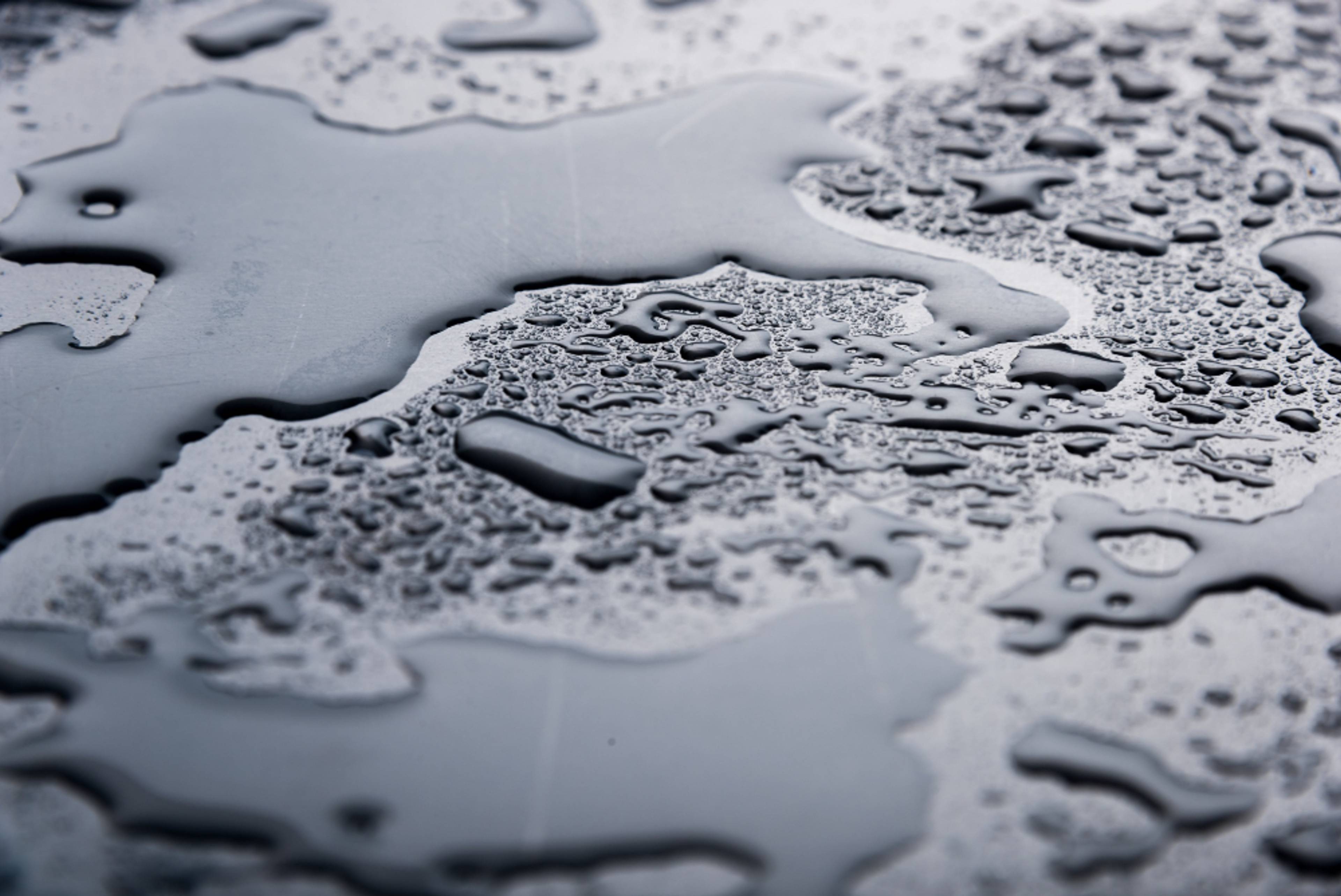*Updated July 2025
Storing your belongings in a self storage unit is convenient, but it’s not always as simple as locking the door and walking away. Moisture can build up over time, leading to mould, rust, and other damage.
At HOLD, all our units are fully climate-secure, offering added protection against humidity and temperature changes. Without access to a climate-stable storage environment, you may need to take your own steps to keep your unit dry.
This guide offers practical methods for preventing moisture accumulation, maintaining a dry environment, and safeguarding your stored items.
Key takeaways
━━━━━━━━━━━━━━━━━━━━━━━━━━━━━━━━━━━━━
Poor ventilation, climate conditions, or leaks in the unit often cause condensation build up.
Climate-controlled units are ideal, but DIY storage solutions (such as dehumidifiers and desiccants) also help air circulation.
Always store dry items, use plastic containers or vacuum-sealed bags, and elevate them off the ground.
Check units regularly for cracks, leaks, and poor seals to prevent long-term moisture accumulation.
Silica gel packs, charcoal, and vapor barriers are effective low-cost ways to absorb humidity.
━━━━━━━━━━━━━━━━━━━━━━━━━━━━━━━━━━━━━
How does moisture build up in storage units?
Moisture in storage units can be caused by several factors, most commonly because of the local climate and poor ventilation. Outdoor weather conditions can impact your self storage unit, even if it's inside.
Humid and air seeps inside through new cracks or gaps in the unit, leading to condensation and moisture build-up. Without proper airflow, this moisture becomes trapped, creating pockets of stagnant air that accelerate mould growth and material damage.

Here are some key factors that affect the humidity level inside storage units:
Local climate: High humidity levels can cause condensation.
Poor ventilation: Lack of air circulation can trap moisture.
Inappropriate packing materials: Cardboard boxes absorb moisture, making them less ideal for long-term storage. Plastic is a good alternative.
Excess moisture in a storage unit can be severe. Mould spores thrive in damp, dark environments. This can damage your belongings and create health hazards, particularly for those with allergies or respiratory issues.
Mould damage can ruin belongings and pose health risks.
Rust is particularly damaging to metal items like tools or electronics.
Wood, fabric, and paper items are especially vulnerable to warping and discolouration.
What is a climate-controlled storage unit?
Climate-controlled storage units are your best bet to prevent mould from moisture buildup. These storage solutions allow you to control the temperature and humidity, block outdoor moisture, and protect your belongings.
If you’re storing sensitive items like electronics or furniture, a climate-controlled (or climate-secure) unit is often worth the investment.

You may also want to consider the location of the storage unit. This is more important if you don't have a climate-controlled unit. Find a unit in an area that is less likely to experience dampness. An indoor storage unit is best.
Check your storage unit regularly
Check the unit before renting it, inspecting it for cracks and holes. Damages to the storage wall can increase the amount of moisture that gets in.
Remember to check your unit periodically, as new potential leaks could appear at any time. It's essential to maintain your unit to prevent leaks from occurring.
A well-maintained unit should have tight seals around doors and windows to prevent outdoor moisture from getting inside. Here are some key points to consider when inspecting your unit.
Inspect for leaks: Look for cracks, leaks, or gaps.
Check ventilation: Ensure the unit has adequate air circulation.
Seals: Tight seals around doors and windows prevent moisture entry.
How do I keep my items dry?
Proper moisture control starts before choosing storage solutions. Before placing any item into storage, ensure it is completely dry. Even a small amount of residual moisture can encourage mould and mildew, which will quickly spread to other belongings.
Proper packing also plays a crucial role in preventing moisture from entering. Use plastic storage containers instead of cardboard, which absorbs humidity over time.
For added protection, vacuum-sealed bags are ideal. They remove air, limiting exposure to moisture and helping keep items dry and mould-free.
Plastic storage containers: More effective at keeping moisture out.
Vacuum-sealed bags: Ideal for extra protection, particularly for sensitive items.
Lining cardboard boxes: If you must use cardboard boxes, use a plastic tarp or sheet to create a moisture barrier.
Use wooden pallets: Wooden pallets can keep your items off the ground, keeping mould spores away from them
Keeping moisture out of your storage unit
Not every self-storage facility offers climate-secure options, so it's up to you to prevent mould growth. Fortunately, there are simple ways to keep the relative humidity low and protect your belongings with minimal effort.

Install a vapour barrier
A vapour barrier is a polyethene plastic sheet that covers a storage wall, acting as a barrier against outdoor moisture.
If possible, a vapour barrier should also be installed beneath or onto the floor to prevent moisture from the ground from coming inside.
Make some desiccants
Silica gel packs or other desiccants are an easy way to help prevent storage units condensation and protect your belongings. They take in moisture from the air around them.
You can purchase silica gel packs in bulk or even make them yourself at home. Place these packets inside storage boxes, drawers, or directly on the shelves.

If you want to make them yourself, the two things you'll need are:
Fabric: Cut two pieces of cloth into small squares or rectangles and sew them together, leaving an opening on one side.
Silica gel:Purchase silica gel to fill in the pouch you made, sewing up the top afterwards.
If you already have silica gel, then making your own pouches may be sensible. If you don't, it might be worth purchasing the packet in bulk from a storage company or a hardware store.
Bring in some dehumidifiers
A portable dehumidifier can be a great investment. These devices work by extracting excess moisture from the air, which is especially useful in larger storage spaces or units located in particularly damp environments.
If your storage unit has any plug outlets, a dehumidifier and air conditioners are good devices to maintain the temperature and humidity levels in a storage unit without opting for a climate-controlled unit.
Utilise charcoal
Charcoal is a natural alternative that helps draw mositrue out of your self storage unit. As an alternative to silica gel packs, charcoal can be used the same way. Just place a few briquettes in an open container and leave them in your unit and they’ll do the rest.
Charcoal also eliminates odours, making your storage unit smell fresh and clean. Be careful when using charcoal briquettes, as they can easily stain fabrics and clothes.
Conclusion
Preventing moisture in your storage unit is all about being proactive. By choosing the right self storage facility, using moisture-resistant materials, and regularly maintaining your unit, you can keep your belongings safe from the perils of excess moisture.
A little effort now can save you a lot of trouble (and money) down the line.
Keep your belongings dry with HOLD Self Storage

HOLD offers a range of high-quality self storage units to suit every need, from premium business storage to personal solutions. Our modern self storage facility is fully climate-secure, helping to protect your belongings from damp, humidity, and mould.
Whether you need short-term or long-term storage, we combine advanced security, flexible access, and exceptional customer service. Whatever your needs, we'll find the right storage solution for you.
Get a free quote today and get 50% off and a price match within 3 miles.
Frequently asked questions
What can I put in my self storage unit to absorb moisture?
Silica gel packs, charcoal, and portable dehumidifiers are all effective moisture absorbers that can protect your belongings.
What is the ideal humidity level for storage?
Aim for 45–55% relative humidity. Above 55%, moisture can lead to mould, rust, and warping. Climate-secure units like those at HOLD help maintain optimal conditions.
How should I deal with mould in a self storage unit?
Remove any affected items and clean the area thoroughly. Use diluted bleach or a vinegar solution to eliminate mould spores before returning your belongings.
What notice do I need to give to end my self storage contract with HOLD?
We require one month's notice. Any unused rent and your security deposit will be refunded after you check out.
Does HOLD offer any discounts or special rates?
Yes. New customers get 50% off their first 8 weeks of storage. We also offer a price match on competitor self storage units within 3 miles. Get a free online quote to see the latest offers.
How do I keep air flowing inside a shipping container?
To keep air circulating inside a shipping container, install louvre vents or roof-mounted ventilators designed specifically for container use. These allow passive airflow and help reduce condensation. For more active ventilation, consider solar-powered fans made for shipping containers.
Always stack items with space around them and avoid placing goods directly against the container walls. Good airflow inside your shipping container helps protect stored items from damp and mould.

